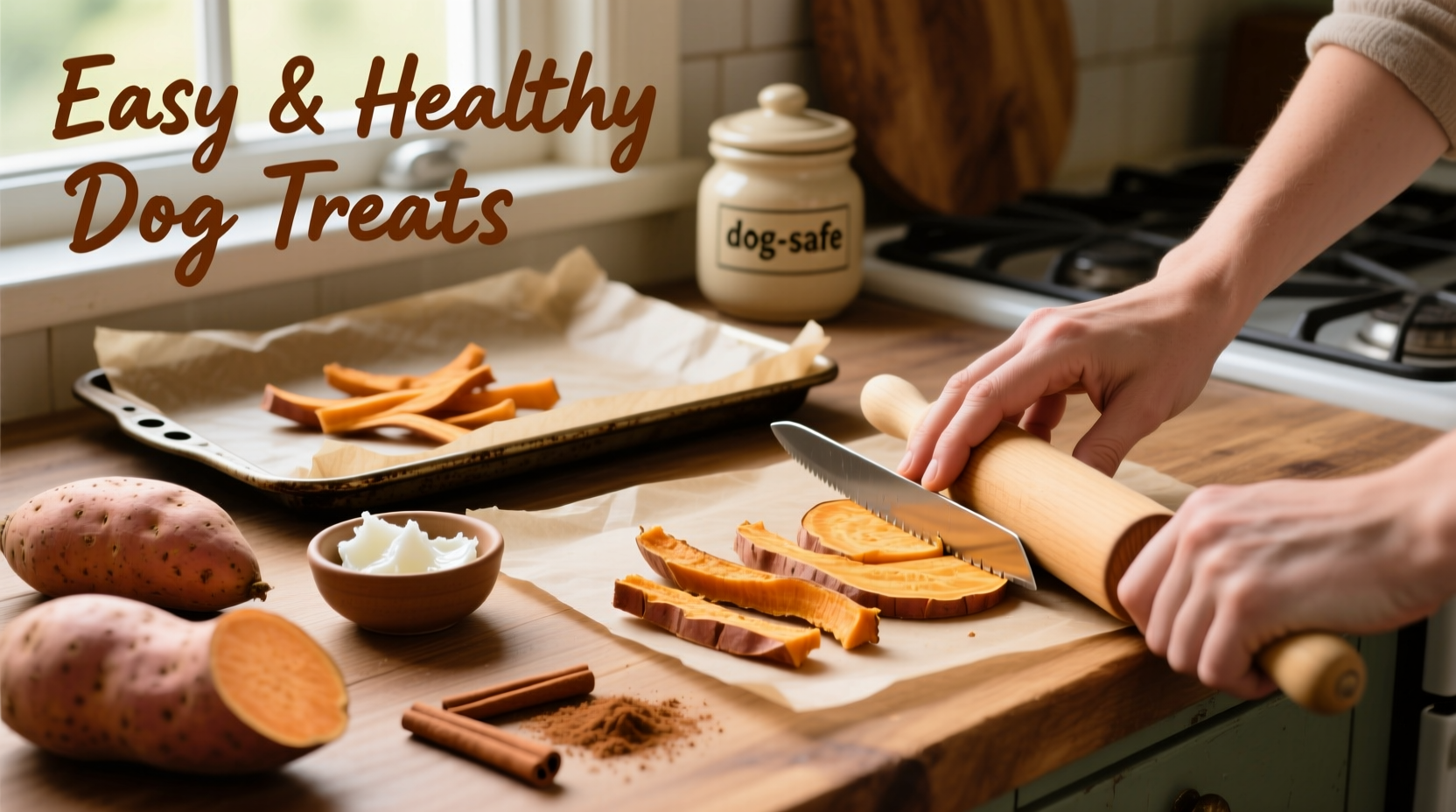Creating homemade sweet potato chews gives you complete control over what goes into your dog's treats. Unlike store-bought options that often contain preservatives and fillers, these natural chews provide essential nutrients while satisfying your pup's craving for something to gnaw on. The preparation process takes just 15 minutes of active time before baking, making it an accessible project even for beginner pet chefs.
Why Sweet Potato Chews Benefit Your Dog's Health
Sweet potatoes rank among the top superfoods recommended by veterinary nutritionists for canine diets. According to the American Kennel Club, these root vegetables provide complex carbohydrates that release energy slowly, preventing blood sugar spikes that can occur with wheat-based treats.
| Nutrient | Benefit for Dogs | Amount per 100g |
|---|---|---|
| Dietary Fiber | Supports healthy digestion and bowel regularity | 3g |
| Vitamin A | Promotes healthy vision and immune function | 14,187 IU |
| Vitamin C | Antioxidant that supports joint health | 2.4mg |
| Beta-Carotene | Natural anti-inflammatory compound | 8,509mcg |
Data sourced from USDA FoodData Central database confirms sweet potatoes contain significantly higher fiber content than pumpkin (a common dog treat ingredient), making them particularly valuable for dogs with sensitive digestion.
Gathering Your Ingredients and Equipment
You'll need just two essential components for this simple recipe:
- Sweet potatoes: Choose firm, unblemished potatoes without soft spots or mold. Organic varieties minimize pesticide exposure.
- Water: For cleaning the potatoes before preparation.
Equipment checklist:
- Sharp chef's knife or mandoline slicer
- Baking sheets
- Parchment paper
- Cooling rack (optional but helpful)
- Food dehydrator (alternative to oven method)
Step-by-Step Preparation Guide
Follow this precise sequence to create perfectly textured chews that won't be too hard (risking tooth damage) or too soft (spoiling quickly):
- Clean thoroughly: Scrub sweet potatoes under running water to remove dirt. Never use soap as it can leave residues.
- Slice uniformly: Cut into 1/4-inch thick strips. Consistent thickness ensures even drying. A mandoline slicer helps achieve uniform pieces.
- Arrange properly: Place strips flat on parchment-lined baking sheets without overlapping.
- Bake correctly: Set oven to 250°F (120°C). Bake for 2-3 hours, flipping halfway through, until chewy but not brittle.
- Dehydrator method: Set to 135°F (57°C) for 6-8 hours until leathery but pliable.
- Cool completely: Allow chews to cool on a wire rack for 1-2 hours before storing.

Important Safety Considerations
While sweet potatoes are generally safe for dogs, certain health conditions require caution. The ASPCA Animal Poison Control Center notes that while sweet potatoes aren't toxic, they should be avoided for dogs with specific health issues:
| Dog Health Condition | Sweet Potato Recommendation | Alternative Suggestion |
|---|---|---|
| Diabetes | Avoid or strictly limit | Green beans or cucumber slices |
| Pancreatitis | Consult vet before offering | Pumpkin puree (unsweetened) |
| Weight management | Reduce portion size by 50% | Add extra exercise after treat |
| Healthy adult dogs | Safe in moderation | No substitution needed |
Proper Storage and Serving Guidelines
Maximize freshness and safety with these storage recommendations:
- Room temperature: Store in airtight container for up to 2 weeks
- Refrigerator: Extend freshness to 4 weeks when kept in glass container
- Freezer: Maintain quality for 6 months in vacuum-sealed bags
Serving size recommendations based on dog weight:
- Small dogs (under 20 lbs): 1-2 chews daily
- Medium dogs (20-50 lbs): 2-3 chews daily
- Large dogs (over 50 lbs): 3-4 chews daily
Always supervise your dog when introducing new treats. Discard any chews showing signs of mold or unusual odor.
Troubleshooting Common Preparation Issues
Encountering problems with your sweet potato chews? These solutions address frequent challenges:
- Too hard/brittle: Overbaked - reduce time by 20-30 minutes next batch
- Too soft/moist: Undercooked - extend baking time and ensure proper air circulation
- Uneven drying: Inconsistent slice thickness - use mandoline for uniform pieces
- Burning edges: Oven temperature too high - verify with independent thermometer
- Mold development: Insufficient drying - extend drying time by 30-60 minutes
Remember that humidity affects drying time. During rainy seasons, you may need to extend baking time by 25-30% to achieve proper moisture content.
Frequently Asked Questions
Can I use regular potatoes instead of sweet potatoes for dog chews?
No, regular white potatoes contain solanine, a compound toxic to dogs, especially when raw. Sweet potatoes are safe and nutritious, but white potatoes should be avoided for homemade dog treats.
How do I know when sweet potato chews are properly dried?
Properly dried chews should be pliable but not moist, with no visible moisture when bent. They should snap cleanly when folded completely in half. Under-dried chews feel cool to the touch and may develop mold within days.
Are sweet potato chews suitable for puppies?
Yes, but with modifications. For puppies under 6 months, slice chews thinner (1/8-inch) and reduce baking time by 25%. Always supervise young dogs with chews and consult your veterinarian before introducing new treats to puppy diets.
Why do my sweet potato chews develop white spots after storage?
White spots typically indicate sugar crystallization, not mold. This occurs when sweet potatoes with high sugar content dry unevenly. While safe to eat, it suggests inconsistent drying. Ensure uniform slice thickness and proper air circulation during preparation to prevent this issue.











 浙公网安备
33010002000092号
浙公网安备
33010002000092号 浙B2-20120091-4
浙B2-20120091-4